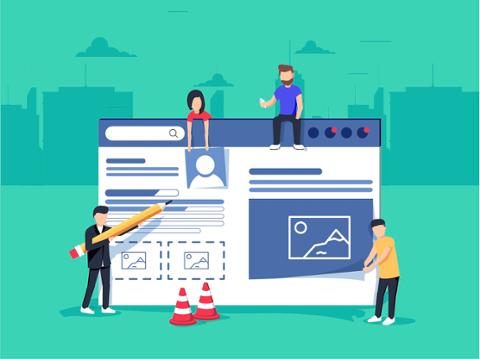Full-stack web developers are often referred to as the “Swiss Army knife” of web developers. They’re prized as versatile professionals who can bring new ideas to life quickly, as well as tackle many parts of the complicated process of web development.
What does it take to actually work as a full-stack web developer? The role encompasses a broad spectrum of knowledge, skills and tools, and you’ll really need to know your stuff: Most hiring teams administer a take-home project or use-case evaluation (UCE) to assess a candidate’s competencies and ability to meet their needs. You will likely need to ace one or two preliminary interviews first, as well.
While there is no “one-size-fits-all” approach to assessing a full-stack candidate, here’s a look at what you are likely to encounter during the interview process, and how to succeed with each round of interviews.
Screening Rounds
If you’re looking to join a large company as a full-stack web developer, a phone screen with HR will likely be your first step. HR’s job is to ensure that you meet the basic requirements, have good communication skills and are pleasant to work with before they pass you along.
The evaluation process begins in earnest with a technical interview conducted by the engineering manager or team lead via phone or online. Their objective when judging web developers is to assess your baseline knowledge, fit for the role, and ability to choose the right technique to solve a specific problem, explained Andrei Neagoie, a senior software developer turned instructor and creator of Master the Coding Interview: Data Structures + Algorithms.
At this stage, most questions will be situational or scenario-based and evolve from your previous experience, as well as the company’s tech stack, scope of work and business goals. Web developers who want to work with the full stack should be prepared to talk about anything and everything.
For instance, all full-stack web developers need to be familiar with current front-end and back-end web tools, the layers of software involved in a web application, scalable web architecture, problem-solving approaches and Agile methodologies, explained Vikram Anand Bushan, co-founder of Hypermine.
If the job involves creating a website from scratch, the engineering manager will want to know what languages, databases and tools you plan to use. He will also explore your knowledge and experience with object-oriented programming, data structures and architecture design concepts.
Examples of questions include:
- How will you establish an expandable architecture so additional modules can be added later?
- Imagine that we were to add 1 million users, how would you set the architecture to support that?
- Why did you choose this database for your web application?
- How would you add new features and functionality to a web application using C# with MVC architecture?
- How would go about modifying an SQL database structure or conducting integration testing?
If you will be using specific frameworks such as PHP Laravel, Jangle or React, the evaluator will probe your knowledge of those as well as model-view-controller (MVC), minimum viable product (MVP) development techniques, material design components (MDC) and other concepts.
To get an idea of what might be tested in the interview, look through the job profile or posting at the specified requirements. Or ask the hiring manager or a current employee so you can review key fundamentals ahead of time.
As always, if you don’t know the answer to a specific question, explain your approach or how you have solved similar problems in the past. If you really want to impress the engineering manager, evaluate the firm’s current website beforehand and be ready to suggest a few ways to optimize its performance.
Use Case Evaluation
Let’s say you’re asked, as part of the interview and testing process, to create a basic website within a few days. The engineering manager may let you substitute a previous, similar project if you have a substantial portfolio.
What are the keys to success in this scenario? The senior engineer will be evaluating the totality of your work, not just the code or design. He will be looking to see whether you have the skills to solve the company’s problems, Neagoie explained.
For instance, he will not only assess your ability to follow instructions, but to connect the dots between your design and the company’s needs. In addition, the company will evaluate whether your design, function and layout mimic the existing product and framework.
Interview with the Director or CTO
With the technical evaluation behind you, the final step is to interview with the director, CTO, or higher-up manager. In this context, knowing a specific framework is great, but not essential; you will be evaluated for your team chemistry as much as your technical skills.
On the technical side, things change quickly, so CTOs such as Bhushan are really looking for evergreen “soft” skills such as teamwork, communication and the adaptability to succeed with various aspects of the project.
Neagoie offered this final tip for communicating effectively with a CTO (and some instructional videos for rookie interviewers, too): “Don’t try to show off how smart you are by using a lot of technical jargon or big words, or you may dig yourself into a hole. Have a conversation instead. Explain your designs or the reasons behind your decisions like you’re speaking to a friend or end user.”



